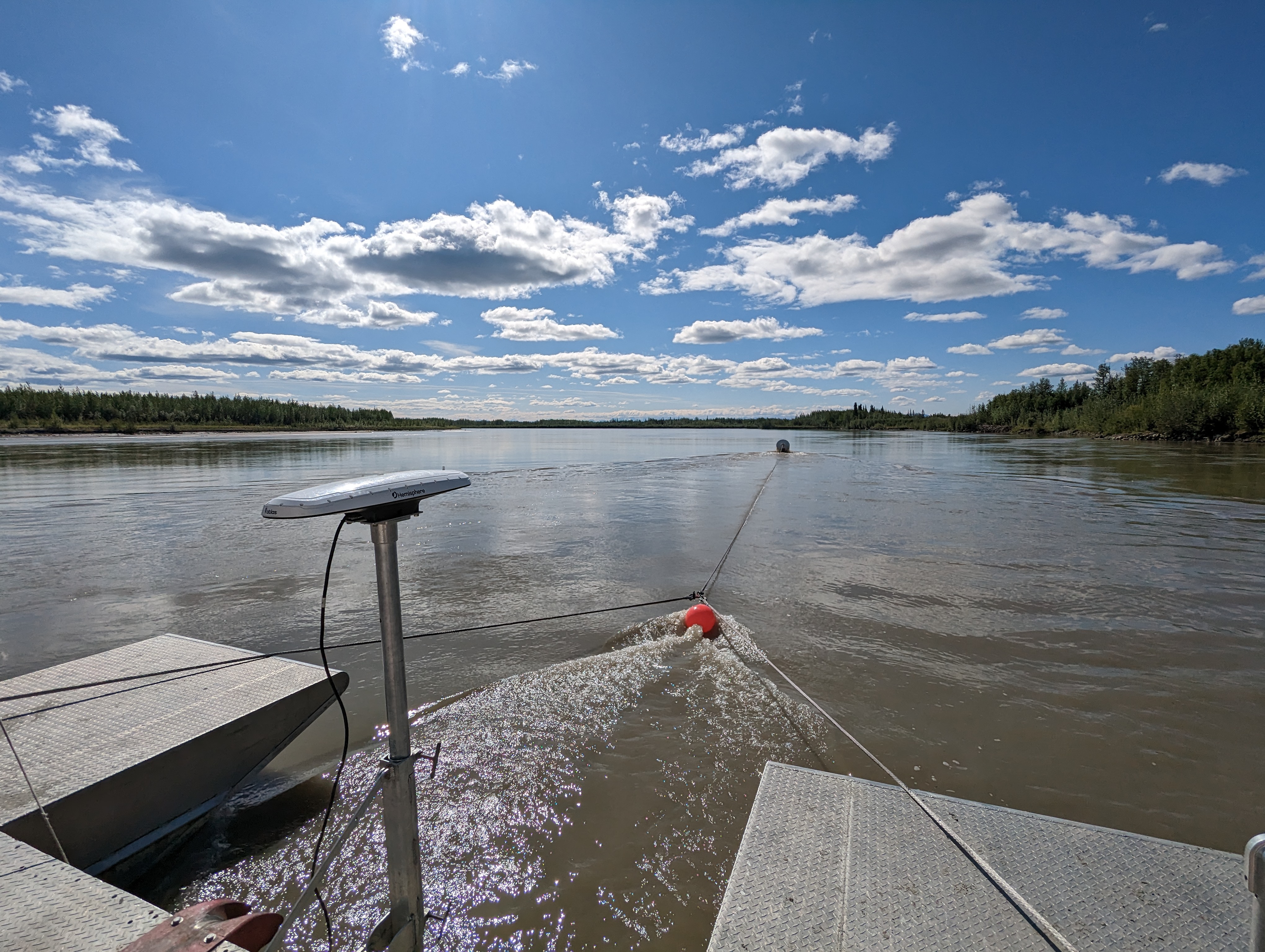Galena river energy project receives $9.5 million
Yuri Bult-Ito
Feb. 28, 2024

The research barge at the Tanana River Test Site near Nenana points upstream in 2023. Testing of prototypes at the site helps technology developers create systems that are ready for pilot deployments.
The Yukon River village of Galena and the University of Alaska Fairbanks will investigate whether in-river turbines can provide electricity to the community.
The UAF Alaska Center for Energy and Power and the nonprofit Sustainable Energy for Galena Alaska will explore the idea. Their project has received a $9.5 million grant from the U.S. Department of Energy.
The project will focus on hydrokinetic technologies, which use energy generated from the natural movement of water.
Galena, off the road system and 270 miles west of Fairbanks, is served by a local microgrid that uses diesel-powered generators. Reliable hydrokinetic turbines could allow the diesel generators to be turned off during ice-free months.
River energy is potentially more stable than wind and solar because the river runs constantly all summer. It also would require a much smaller energy storage system than solar and wind would.
With no need to build an expensive dam, energy generated by hydrokinetic turbines is potentially less costly for the community. The river, when running, could provide 10 to 100 times more energy than the community needs.
“What is special about this project is that we will work with the community throughout the process,” said ACEP’s Ben Loeffler, who is the principal investigator of the project.
The community’s input will help answer questions such as where the turbines should be placed, whether maintenance could be easily managed locally and which technologies would be best.
“Integration of locally managed renewable fuel sources is critical to the energy security of rural and remote microgrid communities like Galena,” said Tim Kalke, the general manager of SEGA.
“The big goal of this project is to see what a community can accomplish with its engagement and decision-making together with funds and technology expertise,” emphasized Loeffler.
ACEP will offer preliminary work to characterize the sites, such as measuring velocities of river currents, mapping the river bottom and working on ways to connect to the grid.
For over 10 years, ACEP has been learning about obstacles to harnessing river energy in Alaska, such as debris, turbidity, turbulence and effects on fish. The team will use its knowledge to help Galena evaluate the technologies.
“This is an exciting opportunity to better understand the challenges and barriers of harnessing energy from the Yukon River,” noted Kalke. “Successful implementation can also serve as a form of economic development that contributes to the community’s well-being.”
The project may help accelerate the development of hydrokinetic technologies, which are relatively new, compared to solar and wind technologies.
If the project is successful, the team hopes to scale up the effort in Galena and replicate such work among Alaska’s more than 90 communities with microgrids on or near rivers.
ADDITIONAL CONTACTS: Ben Loeffler, principal investigator and research professional at the Alaska Center for Energy and Power, bhloeffler@alaska.edu, 907-888-2569; Tim Kalke, general manager at Sustainable Energy for Galena Alaska, tim.kalke@sustainablegalena.org, 907-656-7024
148-24


